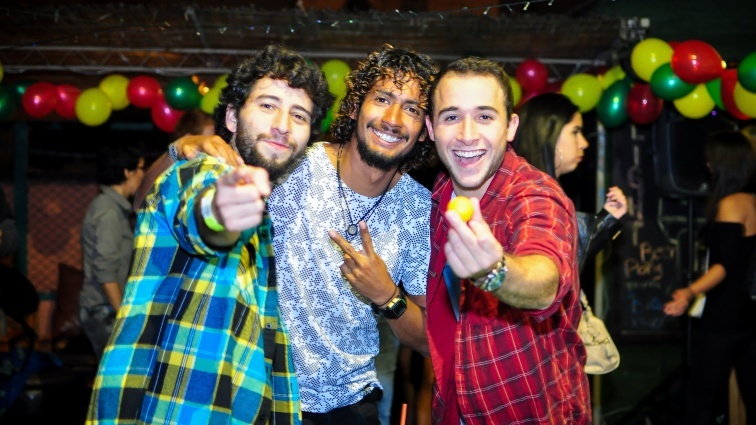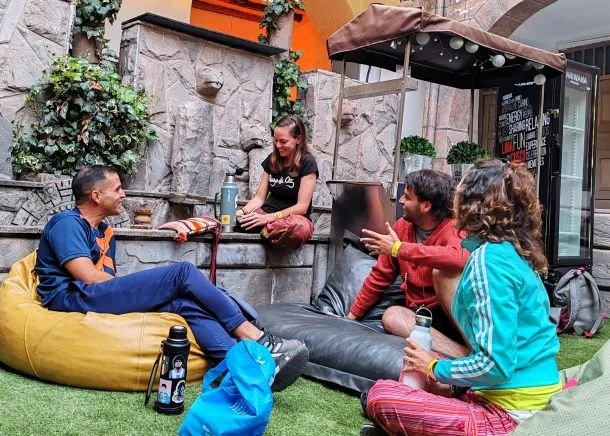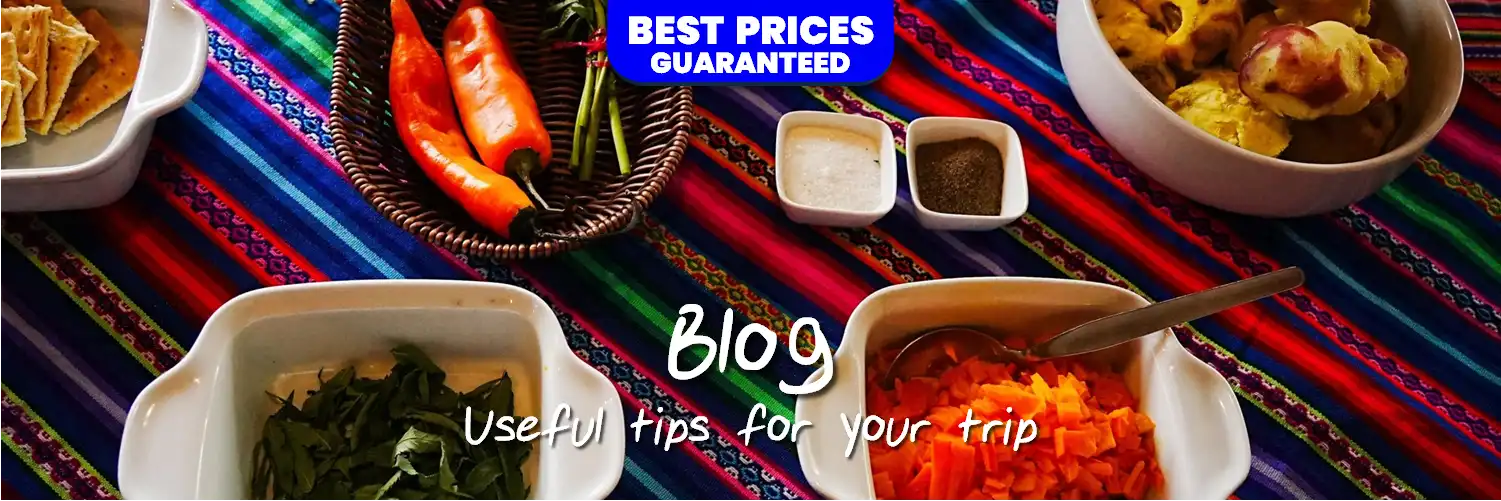Solo vs Group Travel: real benefits of social hostels

This version gets to the point: help you decide whether to travel solo or with a group, and explain—clearly—how a social hostel multiplies the benefits of both. No itineraries, no budgets. Just what matters.
1) The real decision you’re making
You’re not really choosing “how many people to travel with.” You’re choosing what kind of experience you want. Most doubts boil down to a few tensions:
Autonomy vs. company. Do I want to decide every hour—or share decisions?
Depth vs. variety. Meet a few people deeply or many people lightly?
My pace vs. a shared pace. Does my own rhythm work better, or does group coordination help?
Social hostels exist to kill the false dilemma. They don’t force “total solitude” or “glued-together group.” They let you swing between modes: today solo, tomorrow group. That daily switch is often what turns a good trip into a great one.
2) What makes a hostel “social” (and why you should care)
It’s not a marketing sticker. A social hostel is built as infrastructure for connection. Three layers matter:
a) Space
Common areas made for lingering (patios, terraces, bar, shared tables).
Zones with different energy levels: quiet corners to read/work and lively zones to talk/play.
Clear signage and activity boards reduce “What now?” friction.
b) Rituals
Simple, repeatable daily activities (trivia night, walking tour, tastings, short classes) that create a pretext to talk to strangers without awkwardness.
c) Human facilitation
Staff who connect and care: they introduce travelers, form teams, suggest plans based on your profile (introvert/extrovert, early bird/night owl), and enforce house rules so the vibe stays healthy.
Want to see how that looks in real life? Check Pariwana Lima and Pariwana Cusco.
3) Traveling solo: what you want, what hurts, and how a social hostel fixes it
3.1 What solo travelers usually seek
Total autonomy. Choose where, when, and with whom—every day.
Fast learning. Language, culture, and self-knowledge.
Radical flexibility. Change plans without negotiating.
3.2 What usually hurts
Social inertia. Landing in a city and taking too long to “activate” connections.
Decision fatigue. Making all micro-decisions can drain you.
Perceived safety. The first 24–48 hours come with antennas up.
3.3 How a social hostel helps (concrete mechanisms)
Mechanism 1 — Social onboarding in minutes
At check-in, the activities board + a quick welcome at the bar beat 50 reviews. You immediately know what’s on today, where to join, and with whom. With daily agendas like Lima — lineup and Cusco — lineup, you just raise your hand and say “I’m in.”
Mechanism 2 — Low-friction connections
Board games, trivia, and long tables turn a simple “hey” into a conversation—no forced small talk. The age and country mix gives you variety: there’s always someone on your wavelength.
Mechanism 3 — Safety and containment
24/7 staff, lockers, and clear house rules. If you go out at night, you have references and a support net.
Mechanism 4 — Autonomy without isolation
Choose a dorm if you want social energy or a private if you need focus/rest. Switching modes doesn’t break the social loop: you’re still inside the community.
3.4 Signs the hostel is working for you (solo mode)
You naturally chat with new people every day.
You still make at least one decision based on your own impulse (not just FOMO).
You feel safe to move, ask, and explore.
3.5 Red flags and quick fixes
Hours go by without interaction? You’re probably in the wrong zone. Move to a livelier area.
Noise too much? Spot low-energy hours and use quieter areas. A true social hostel should offer both tones.
4) Traveling with a group: what you want, what hurts, and how a social hostel fixes it
4.1 What groups usually seek
Shared memory. Stories only “the trip crew” truly gets.
Logistics efficiency. Agree on basics and head out—without drama.
Distributed responsibilities. One navigates, one documents, one socializes—everyone wins.
4.2 What usually hurts
Deciding everything together. Three hours debating where to go kills the magic.
Different rhythms. Early birds vs. night owls; museum person vs. activity person.
Closed bubble. If you only talk among yourselves, you miss half the trip.
4.3 How a social hostel helps (group-specific mechanisms)
Mechanism 1 — Pre-set agenda = faster decisions
The daily board reduces debates. “What do we do?” becomes “Which of these do we pick today?”
Mechanism 2 — Spaces to split and reunite
Clear meeting points and common areas. People can do different things and regroup at a set time.
Mechanism 3 — Built-in mixers
Bar games and activities act as mixers. Your group stops being an island.
Mechanism 4 — Simple group bookings
For 10+ people, formal pathways avoid chaos. At our place it’s Group Reservations: clear comms, bed blocks, and shared expectations.
4.4 Signs the hostel is working for you (group mode)
The “what do we do” conversation lasts minutes, not hours.
At least one activity involves people outside your group each day.
Everyone rests; no one feels dragged along.
4.5 Red flags and quick fixes
Stuck together 24/7? Schedule 1–2 open activities and split into interest-based micro-teams.
Debates draining energy? Assign a “day lead” to pick from the board’s options.
5) Solo vs Group, head-to-head (no fluff)
| Objective | Best in… | How a social hostel tilts it |
|---|---|---|
| Autonomy | Solo | Open agenda + opt-in activities. Join or disappear—guilt-free. |
| Company | Group | Long tables, games, and mixers make your crew blend with others. |
| Personal growth | Solo | 1-to-1 talks, your own rhythm, the right dose of discomfort. |
| Decision efficiency | Group | Daily calendars + staff input reduce debates. |
| Diverse connections | Solo | You arrive without a “bubble,” staff introduce kindred spirits. |
| Perceived safety | Group | You move together and rely on hostel references if splitting. |
| Plan flexibility | Solo | You pivot without renegotiation; the hostel keeps doors open. |
| Belonging | Tie | Shared rituals + familiar faces; the hostel is your common base. |
A tie is good news. It means you can alternate modes based on your energy—without changing accommodation or community.
6) A practical decision—answer just three questions
What’s my priority today? (autonomy, company, focus, exploration)
What’s my social energy? (high → activity; medium → casual chat; low → quiet corner)
Do I need outcomes or open fun? (errands/study → solo; celebration → group)
Pick the day’s tone:
Solo Mode → Choose calmer spaces, talk to 1–2 people, join one activity that won’t hijack your day unless you want it.
Group Mode → Set a meeting time, pick one shared activity, leave a window for individual interests.
7) How to recognize a good social hostel (short, actionable checklist)
Visible calendar at the entrance—and staff who actually live it.
At least two zones with different energy (quiet & lively).
Clear house rules (silence, cleanliness, respect) and consistent enforcement.
Good beds & lockers that work.
Inclusive language & safe vibe for diverse profiles (gender, language, budget).
Logical location to walk to key spots or transport.
Team with local criteria (real recommendations, not guesswork).
Check our ethos in About us and common queries in FAQs.
8) Real-life scenes: how social value plays out (no, this isn’t a “guide”)
Scene A — You arrive solo
Backpack down. The board says “Trivia 8pm.” Reception introduces you to two fresh arrivals. Five minutes later you’ve got plans. Autonomy intact, company unlocked.
Scene B — You arrive with three friends
Different interests, one roof. The calendar saves the day: two pick Activity X, two pick Y. Terrace meetup at 7pm. Zero drama, coordination done.
Scene C — You might leave tomorrow
Staff mention a once-a-week activity you’d love. You shift departure by a day. Informed decision, zero FOMO.
Scene D — Noise overwhelms you
You move to a quieter corner and chat with someone who wanted the same. Real connection, no party required.
Scene E — You want to expand your network
Bar mixer, low pressure. You leave with three contacts from three countries.
Scene F — You actually want sleep
Everyone returns late, but quiet-hours rules are real and enforced. You wake up fresh.
9) How a social hostel caters to different profiles (without stereotypes)
Introvert explorer (solo): small activities (tasting, short workshop), 1-to-1 chats. Benefit: deeper connections.
Extrovert connector (solo): trivia, games, bar. Benefit: wide network for spontaneous plans.
Mixed friend group: split by interest, reunite at fixed times. Benefit: everyone wins; no frustration.
Couple travelers: quiet nooks + one social activity a day to oxygenate.
10) Best practices inside the hostel (these are house-vibe rules, not generic “travel tips”)
Respect spaces: dorm = rest, common areas = conversation.
Participate without steamrolling: listening and adding beats monopolizing.
Care for the vibe: shared order/cleanliness; chaos helps no one.
Ask the staff: their job is to connect you; use it.
11) Where to start—without turning this into a “guide”
Coastal city + urban energy? Pariwana Lima.
History + intense traveler community? Pariwana Cusco.
Coming 10+ strong? Group Reservations keeps group mode tidy.
Check Lima’s daily lineup or Cusco’s daily lineup and set the tone of your day.
Each internal link appears once to keep things clean and useful.
12) Clear conclusion
There’s no universal answer to “solo or group?”. There is a tool that makes either answer a good one: the social hostel. It gives you autonomy when you need it, company when you want it, structure when the group asks for it, and space when you ask for quiet. In short: it lets you choose every day—without switching accommodation or community.
See you in the patio.
✍️ Pariwana Editorial Team
Practical travel tips written by backpackers, for backpackers.

A practical guide to connect in hostels: activities, walking tours, and dorm etiquette.


